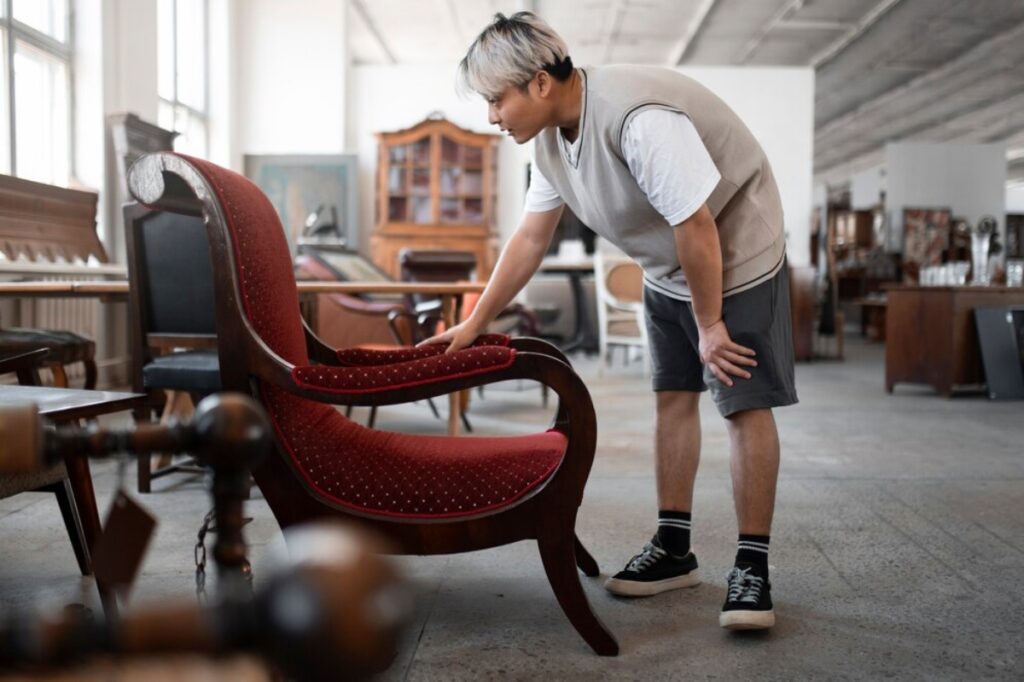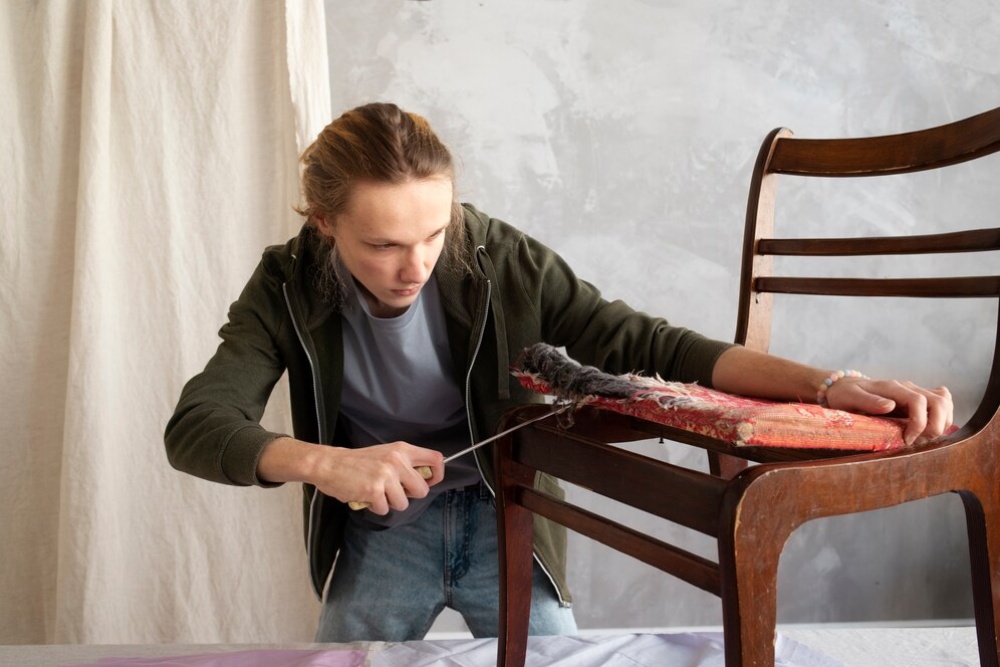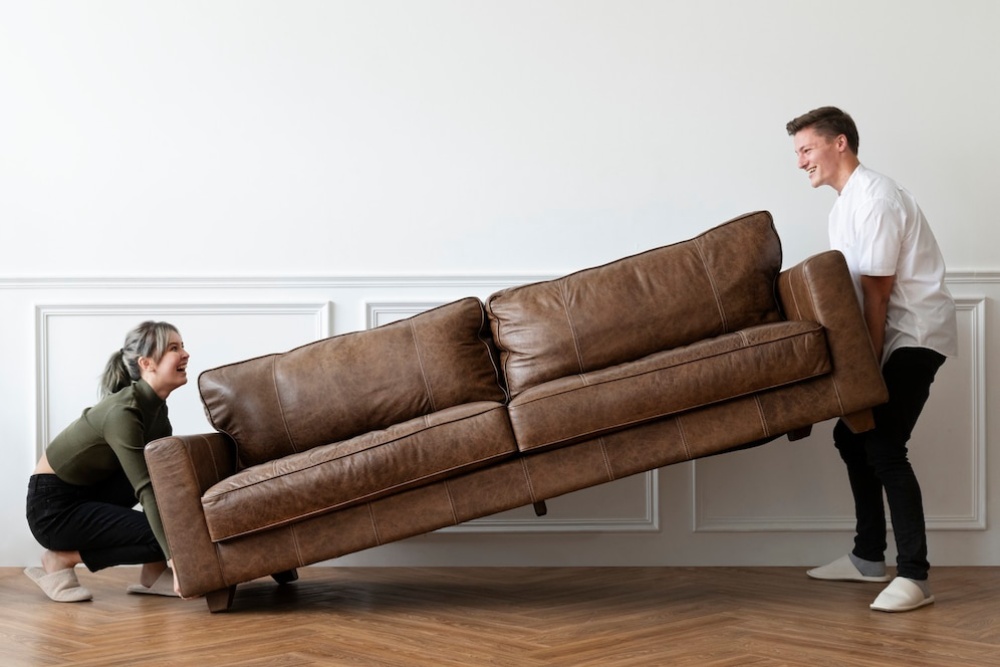The Interior Design Blog

How to Reupholster a Chair for a Fresh New Look
Reupholstering a chair can transform a tired piece of furniture into a stunning showpiece, infusing your home with new energy. Whether you’re a pro at tackling DIY projects or just starting, chair reupholstery is best learned in stages.
Reupholstering allows you to make your furniture more you. It can save you money and reduce waste, as well. This way, you can make it a one-of-a-kind that reflects on you. This comprehensive guide will provide practical steps on how to do this and expert tips to ensure success.
Understanding the Core
The Art of Reupholstery
Reupholstering a chair involves removing the old fabric padding and replacing it with new materials. The process demands precision and patience but can result in an utterly rejuvenated piece.
Key Components of a Chair
- Frame: The foundation of the chair; inspect for damage or instability.
- Springs: Provide comfort and support; repair or replace if needed.
- Padding: Essential for comfort; select appropriate thickness and density.
- Fabric: Choose a durable, stylish material for the visible layer to match your decor.
Pro Tip: Go for upholstery-grade material that can withstand daily wear.
The Importance of Reupholstering
- Sustainability: Reduces landfill waste and supports eco-friendly living.
- Sentimentality: Preserves treasured heirlooms or vintage finds.
- Customisation: Tailor’s furniture to your taste and home design.
- Value: Offers a cost-effective alternative to buying new furniture.
Quick Guide / Checklist
Use this checklist to stay organised:
- Assess chair condition (frame, springs, padding)
- Choose and purchase fabric, padding, and tools
- Gather tools: staple gun, scissors, screwdriver, pliers, etc.
- Remove old fabric and inspect components
- Repair or reinforce the frame and springs
- Cut new fabric and padding to fit
- Attach padding securely to the frame
- Staple fabric, working from the centre outward
- Reassemble the chair and inspect the final product
Quick Guide
Assess and Prepare
Check the chair’s frame, springs, and overall stability to ensure it’s worth reupholstering. Gather all tools and materials before you begin.
Remove Old Upholstery

Carefully strip away old fabric and padding using pliers and a screwdriver. Save the old fabric pieces as templates for cutting the new ones.
Repair and Reinforce
Fix any damage to the frame or springs. Re-glue joints, tighten screws or replace broken parts to ensure a solid foundation.
Important Tip: Safety First: Wear gloves and eye protection when using tools.
Cut New Padding and Fabric
Measure your chair components and cut new padding and fabric to size. Add a few extra inches to the fabric edges for secure stapling.
Attach Padding
Staple the new padding to the seat and backrest. Make sure it’s evenly distributed and smooth for comfort and shape.
Apply New Fabric

Start stapling the new fabric at the centre of each side and work your way out. Pull the fabric tight as you go to avoid wrinkles. Fold and staple neatly at corners.
Reassemble and Inspect
Reattach any components you removed (legs, arms, cushions). Give the chair a final check to ensure the fabric is tight and evenly finished.
Important Notes
- Mind the Pattern: For patterned fabric, align designs carefully across the chair.
- Test the Springs: Replace any sagging or noisy springs for better comfort.
Best Practices & Additional Insights
Enhancing the Outcome
- Double-Stitching: Adds strength to high-use areas.
- Custom Cushioning: Mix foam and batting for tailored comfort.
- Fabric Protector: Spray a fabric protector to resist stains and prolong life.
Professional Insights
If you’re unsure about your chair’s structure or working with antique furniture, consult a professional upholsterer for tips or a second opinion.
FAQs
1. How long does it take to reupholster a chair?
Depending on the complexity and your skill level, it can take a few hours to an entire weekend.
2. Can I reupholster a leather chair?
Yes, but working with leather requires special tools and techniques. Consider practising on a simpler fabric first.
3. Is reupholstering cost-effective?
Absolutely. If your chair is high quality or sentimental, reupholstery is usually less expensive than buying new.
Bringing New Life to Old Furniture

Reupholstering a chair is a great way to refresh an area. It is also creative and eco-friendly. With patience and the proper guidance, you can transform a well-loved seat into a standout element perfect for your home.
Ready to start your project? Collect your tools, select your fabric, and follow the steps above to get started on your reupholstery project. Share your findings with us to motivate others and discover the true meaning of DIY furniture makeovers.
For more home improvement guides and inspiration, subscribe to our newsletter today!









